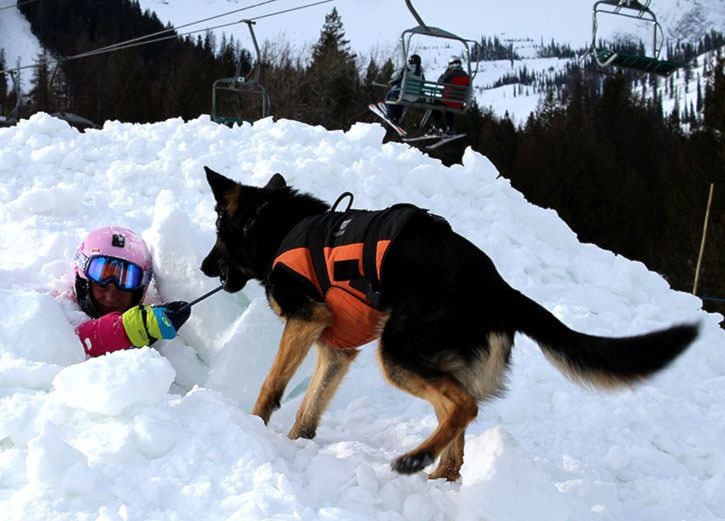By Ezra Black
Boom. The sound of an avalanche control team bombing the headwall at Fernie Alpine Resort (FAR) is the community’s natural alarm clock and lets locals know that it will be a good day on the hill.
But avalanches are no joke. According to Avalanche Canada they are the nation’s deadliest natural hazard and have killed an average of 13 people a year over the last 10 years, more fatalities than all other natural hazards combined.
On Jan. 18, FAR and the Canadian Avalanche Centre (CAC) hosted an Avalanche Awareness Day to prevent avalanche accidents and help people make good decisions in avalanche terrain.
Activities included transceiver education, a demonstration from a member of the Canadian Avalanche Rescue Dog Association (CARDA) and a compressed nitrogen cannon shooting t-shirts into the crowd.
Fernie has one of the largest avalanche control programs in Canada, said Kendra Downey, events coordinator at FAR.
“It’s because of our headwalls,” she said. “Almost no resort across Canada has a headwall like this with a resort below it. We have a special situation in Fernie.”
Fernie’s avalanche control programs boasts six CARDA dogs and three avalanche cannons. Its 40 plus member ski patrol team keep terrain safe using hand-held devices used to trigger controlled avalanches called hand chargers.
This season, an unusually weak snowpack has developed on the hill. Johanna Wilson, a level-four ski patroller at FAR, explained that the early season’s frigid temperatures turned the bottom layers of the snowpack into sugar snow, which is quite weak.
“This year we’re dealing with some persistent weak layers and a generally weak snowpack,” she said. “We haven’t had a lot of snow in a while. We’re keeping an eye on those weak layers but they haven’t really woken up yet. Once we start getting heavier loads on top of what we have, that’s when we could see these weak layers start to wake up and we could get some pretty big avalanches, potentially. But as of right now it’s status quo.”
“If we get any amount of snow we definitely take avalanche mitigation pretty seriously,” she added. “Our risk tolerance is low.”
Ski patroller Megan Kelly was showing off the skills of her three-year-old CARDA dog Mogul who successfully sniffed out a number of volunteers buried in snow for a mock-rescue.
Born in New Brunswick, Mogul is a German shepherd who began his training when he was just nine weeks old.
“I would just run 10 metres away and hide behind a tree,” said Kelly. “And the dog would then chase me and expect [a reward].”
His training progressed until Mogul was eventually able to locate people hiding in snow caves and sniff out human scented sweaters buried deep in the snow.
